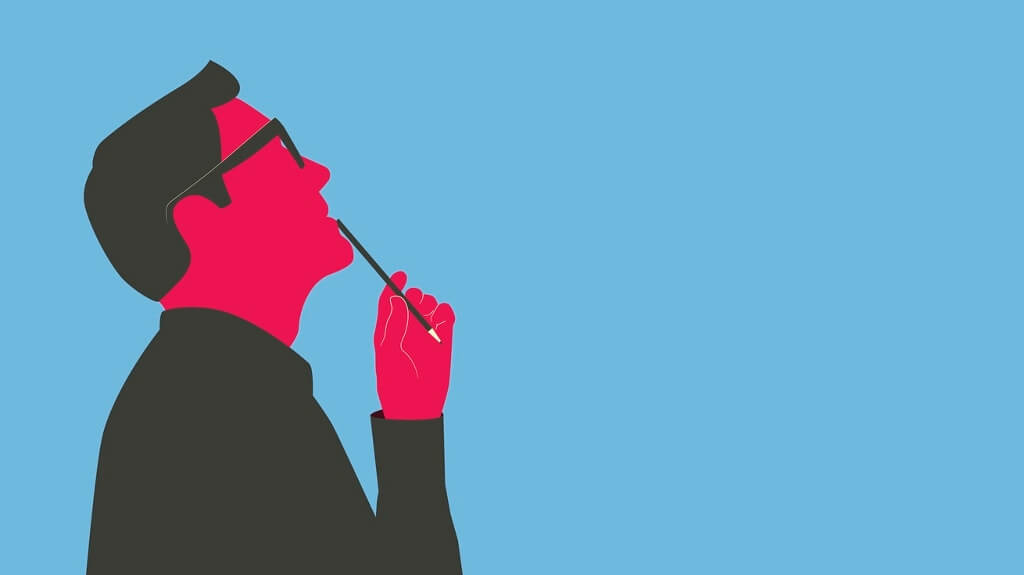Enjoy the Silence: Why Teams Must Allow Time To Think
People in business are busy, but allowing people thinking time will deliver spectacular results

Recent research suggests that 30% of knowledge workers do no thinking at work at all and 58% do less than 30 minutes. People are so occupied by answering emails and rushing from one task to the next that thinking has fallen by the wayside.
As a consequence facilitating a bountiful creative session is now a tough brief; getting people comfortable, energised and off autopilot, so they can fire up their minds and think freely, requires some skill.
Our work at Upping Your Elvis helps people, teams and businesses become more energetic, human and creative. If I had one top tip for facilitating a successful creative session, it would be to stop talking so much and enjoy the silence.
In the far more articulate words of the poet Thomas Carlyle: "Silence is the element in which great things fashion themselves together; that at length they may emerge, full-formed and majestic, into the daylight of life”…Exactly Tom!
When somebody is asked to facilitate a creative session a few things seem to naturally evolve: First, their head gets busy, usually with unhelpful stuff like performance anxiety. They then grab a pen and stand by a flip chart (because that’s how creative sessions have always been run…).
Then they start talking. And talking. And if they’re not careful, they don’t stop talking for the entire session. Why? Partly because they think it’s the facilitators job to be the dominate voice in the room and partly because they’re terrified that if they stop speaking, no one will say anything and they’ll experience an awkward, uncomfortable silence.
A few problems with this approach
It’s exhausting! Most people think, that as facilitator, they’re responsible for everything. They are not. The role of a facilitator is to create the conditions for others to get creative on the brief. The facilitator captures their ideas.
Talking and leading the session on your own will be draining and consequently low on results.
You have less awareness. Talking constantly makes us less aware of what is happening in the room. Awareness is the key to being a good facilitator. With awareness comes choice, choice brings flexibility and with flexibility, creative sessions flourish.
A good facilitator reads the room (for energy, focus, behaviours, connection, context) and is able to answer the question “what’s needed here?” By braving the silence we become aware. In the wise words of Greek philosopher Epictetus “We have two ears and one mouth so that we can listen twice as much as we speak”

If you want to progress, make like Rodin
No one else can play because you’re taking up all the space. As a result, people start to disengage and this in turn leads to misbehavior and unrest. Not the best setting for a fruitful ideas session. In 1787 George Washington chaired the Constitutional Convention.
His high profile position could have easily given him the permission to direct the talks his way. However, he chose instead to facilitate the session so all the delegates could be heard.
He parked his ego and gave his opinion only when asked. One of the most important documents in history was born.
To help people deliver productive and engaged creative sessions I have developed Jim’s Magnificent 7:
Breathe
Our favourite top tip when it comes to facilitation (and life for that matter). Paying attention to your breathing is one of the fastest ways to become calm, centered, and energised. You’ll be way more present and less likely to blather.
Start by taking a few long deep breaths before you start, so you fill the full capacity of your lungs and your belly rises and falls.
Set up
If you’re going to throw energy at your session, then do so in ‘setting it up’. As facilitator it’s key that you create the conditions for others creativity to thrive.
A quick box ticking exercise would include; clarity on context (what’s the brief and share your ‘vision of success’ for the session so that everyone’s on the same page. Make sure the environment is conducive to the work.
Be explicit about the behaviours you want the group to roll model (positivity and playfulness are a good start). And finally, is the group energy right for a kick about creative session? If not do something to get it right.
"It’s not a performance and it’s not about you. Put the emphasis back on the group. Make them realise that your role is simply to capture their ideas."
Small group
No more than 6, but preferably 3-4 people. It’s easier to facilitate, the silences are less intimidating, it ensures everyone has to participate and you can move faster. (If you have a bigger group, split them into smaller groups for the creative elements)
Be lazy
Once you’ve set the session up, put the emphasis back on the group and make them do the hard work. We call this approach, ‘lazy facilitation’. The simplest top tip I have is to ask the question…”so who has an idea”.
But then you need to shut up and enjoy the silence. 9 times out of 10, all that people are doing is thinking. Allow them time to make connections. 5 seconds can feel like an eternity when in front of a group, but enjoy it…and wait for someone to contribute. Don’t forget to breathe.
Put your creative ego to one side
It’s not a performance and it’s not about you. Put the emphasis back on the group. Make them realise that your role is simply to capture their ideas. They are responsible for the output, not you. This will wake them up and encourage better engagement.
Go forward everyone now and then
Lazy facilitation is great, but there are a few watch outs. The energy can dip over time, ideas can start to move off brief and confusion can settle in. Then it’s time to step forward, intervene and address these issues. Take a break, inject some energy, make some decisions.
Relax, smile and enjoy
People will be much more comfortable with silence if the facilitator looks comfortable. So relax, smile and enjoy running a truly creative session, which is all about being open to possibility and unattached to an outcome.
In the words of Princess Elsa “Let it go!” Remember, if you empower the group you can never predict what they’ll give you, so just enjoy what arises and explore how that can answer the brief.
Jim Lusty is a Partner at Upping Your Elvis helping businesses realise their potential.
Thanks for signing up to Minutehack alerts.
Brilliant editorials heading your way soon.
Okay, Thanks!


